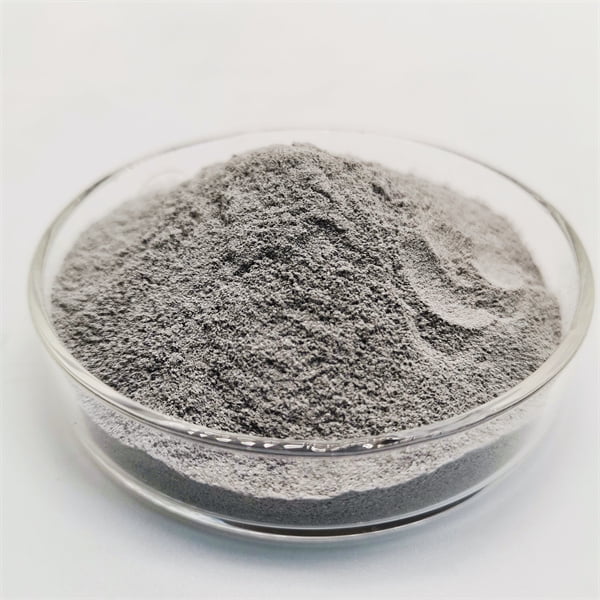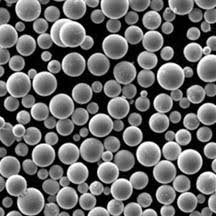
Molibdénio em pó
Overview of Molybdenum Powder Molybdenum is a silvery-white refractory transition metal with very high melting point, excellent corrosion resistance, and good thermal/electrical conductivity. In powder form, it exhibits high strength at elevated temperatures along with stability in harsh environments. Key properties of molybdenum powder include: High temperature strength and creep resistance Excellent corrosion resistance Good…
Pequeno MOQ
Fornecimento flexível para centenas de produtos
Suporte à personalização
Pó personalizado de acordo com a indústria
Expedição rápida
Por DHL Express, seguro e rápido diretamente para as suas mãos
Visão geral do pó de molibdénio
Molybdenum is a silvery-white refractory transition metal with very high melting point, excellent corrosion resistance, and good thermal/electrical conductivity. In powder form, it exhibits high strength at elevated temperatures along with stability in harsh environments.
Key properties of molybdenum powder include:
- High temperature strength and creep resistance
- Excelente resistência à corrosão
- Good thermal and electrical conductivity
- Baixo coeficiente de expansão térmica
- Elevada dureza e resistência ao desgaste
- Good lubricity in sulfide atmospheres
- Disponível em várias distribuições de tamanho de partícula
Molybdenum powder is used where its heat resistance, corrosion resistance, conductivity, and lubricity can be utilized. Major applications include alloying, electronics, coatings, welding, and specialty metals fabrication.
Composition of Molybdenum Powder
Molybdenum powder has the following typical composition:
| Elemento | Pureza |
|---|---|
| Molibdênio (Mo) | Mínimo de 99% |
| Oxigênio (O) | 0.01-0.5% |
| Carbono (C) | 0.01-0.1% |
| Ferro (Fe) | 0.2-2% |
| Cobre (Cu) | 0.1-0.5% |
| Silício (Si) | 0.05-1% |
| Tungstênio (W) | 0.1-1% |
| Enxofre (S) | 0.01-0.1% |
High purity grades contain over 99% molybdenum with low impurity levels. Commercial powders have higher permissible impurities.

Properties of Molybdenum Powder
Molybdenum powder exhibits the following properties:
| Propriedade | Valor |
|---|---|
| Densidade | 10.22 g/cm3 |
| Ponto de Fusão | 2623¡«C |
| Condutividade térmica | 138 W/m?K |
| Resistividade elétrica | 5.5 Ã×´Î?cm |
| Módulo de Young | 324 GPa |
| Coeficiente de Poisson | 0.31 |
| Resistência à tração | 350 MPa |
| Resistência ao escoamento | 220 MPa |
| Elongação | 20% |
| Dureza Vickers | 200 HV |
Molybdenum offers very high melting point, strength at elevated temperatures, good thermal/electrical conductivity, and low thermal expansion.
Production Methods for Molybdenum Powder
Molybdenum powder can be produced by methods like:
- Hydrogen Reduction?- Molybdenum trioxide reduced with hydrogen gas to produce molybdenum powder.
- Thermal Decomposition?- Heating molybdenum compounds like ammonium molybdate to form molybdenum oxide followed by hydrogen reduction.
- Electrolytic Production?- Aqueous electrowinning from acidic molybdate solutions produces molybdenum powder deposit.
- Redução Calciotérmica?- Reduction of molybdenum trioxide using calcium.
Hydrogen reduction is a common industrial method. The powder morphology, size and purity can be controlled.
Aplicações do pó de molibdénio
Molybdenum powder has the following major applications:
- Alloying Addition?- Added to stainless steels, nickel alloys, tool steels to enhance properties.
- Metal Coatings & Spraying?- Thermal spray coatings, plating processes use molybdenum for wear/corrosion resistance.
- Electronics & Contacts?- Used in circuitry, vacuum tubes, cathode ray tubes and electrical contacts.
- Soldadura?- As filler material for stainless, high-nickel and refractory metal welding.
- Lubrificantes?- Added to greases and oils to provide lubrication in high temperature sulfide environments.
- Pirotecnia?- Combined with other powders for pyrotechnic delay compositions requiring controlled burn rates.
Specifications of Molybdenum Powder
Molybdenum powder is available under various specifications:
- Graus de pureza?- From commercial purity to 99.999% ultra high purity grades.
- Tamanhos de partículas?- Ranging from 1 micron to 150 microns for different applications.
- Morfologia?- Irregular, spherical and nodular powder shapes are available.
- Área da Superfície?- Low to high surface area powder grades.
- Teor de Oxigênio?- High purity, low oxygen powders for specialty applications.
Global Suppliers of Molybdenum Powder
Some of the major global molybdenum powder suppliers include:
- H.C. Starck (Alemanha)
- Molymet (USA)
- JDC Molybdenum (China)
- Exploiter Molybdenum (China)
- Plansee (Austria)
- Midwest Tungsten (USA)
These companies produce molybdenum powder grades using various methods at commercial to ultra high purity levels.
Pricing of Molybdenum Powder
Molybdenum powder prices depend on factors like:
- Grau de pureza?- From $5/kg for commercial purity to over $500/kg for ultra high purity grades.
- Tamanho da partícula?- Os pós nanométricos e sub-micrónicos têm preços mais elevados.
- Morfologia?- Spherical powders command premium over irregular grades.
- Quantidade?- Os preços são reduzidos para quantidades a granel devido à economia de escala.
- Fabricante?- Major global suppliers offer competitive pricing.
- Geografia?- Os preços variam consoante a região do mundo.
Storage and Handling of Molybdenum Powder
Molybdenum powder requires controlled storage and handling:
- Prevent exposure to air and moisture to minimize oxidation.
- Avoid dust accumulation and ignition hazards from fine powders.
- Use appropriate ventilation and respiratory protection when handling.
- Follow precautions in Safety Data Sheet from supplier.
- Store sealed containers in a cool, dry place away from incompatibles.
Proper grounding, inert gas blanketing, PPE should be used when handling molybdenum powder.
Inspection and Testing of Molybdenum Powder
Typical inspections and tests carried out on molybdenum powder:
- Análise química?- ICP and XRF techniques used to verify composition meets specifications.
- Tamanho da partícula?- Laser diffraction analysis as per ASTM B822 standard.
- Morfologia?- SEM imaging used to determine particle shape and surface area.
- Área de superfície específica?- BET gas absorption method used.
- Impurity Testing?- ICP-MS used to quantify levels of oxygen, iron, copper, tungsten and other impurities.
- Fluxo de pó?- Tested as per ASTM B213 standard using Hall flowmeter.
Comparison of Molybdenum and Tungsten Powders
Molybdenum and tungsten powders are two refractory metal powders compared:
| Parâmetros | Molibdênio | Tungstênio |
|---|---|---|
| Densidade | 10.22 g/cm3 | 19.3 g/cm3 |
| Ponto de Fusão | 2623¡«C | 3422¡«C |
| Resistência à tração | 350 MPa | 350 MPa |
| Condutividade térmica | 138 W/mK | 163 W/mK |
| Resistividade elétrica | 5.5 Ã×´Î.cm | 5.5 Ã×´Î.cm |
| Custo | Baixo | Maior |
| Toxicidade | Baixo | Maior |
Molybdenum has lower density, melting point, and cost but offers similarly high strength and conductivity as tungsten.
Molybdenum Powder FAQs
Q: How is molybdenum powder produced?
A: Common industrial production methods for molybdenum powder include hydrogen reduction of molybdenum trioxide and thermal decomposition of molybdates followed by reduction.
Q: What is molybdenum powder used for?
A: Major applications of molybdenum powder include alloying, thermal spray coatings, electronics, welding, lubricants, pyrotechnics, and as a pure metal.
Q: What powder size is used for thermal spray coatings?
A: For most thermal spray processes, molybdenum powder is typically used in size ranges of 45-150 microns. Finer powder can be challenging to fully melt.
Q: Is molybdenum powder flammable or explosive?
A: Yes, like other finely divided metals, molybdenum powder can potentially be flammable or explosive. Proper precautions are needed for safe handling and storage.
Q: Where can I purchase high purity molybdenum powder?
A: Ultra high purity (99.999%) molybdenum powder can be purchased from major suppliers including H.C. Starck, Molymet, Plansee, and JDC Molybdenum.
Contactar-nos agora
Contacte-nos para obter cotações de produtos recentes e disponibilidade de stock.
